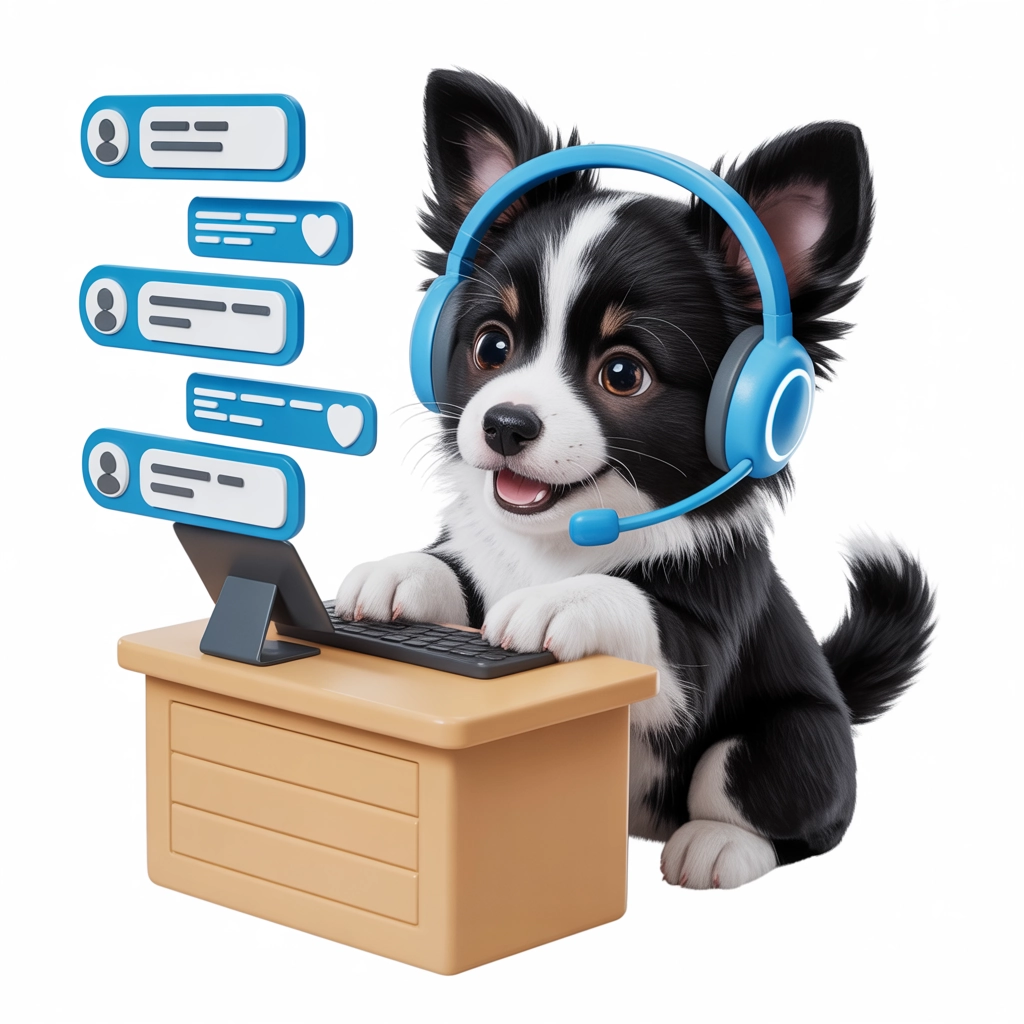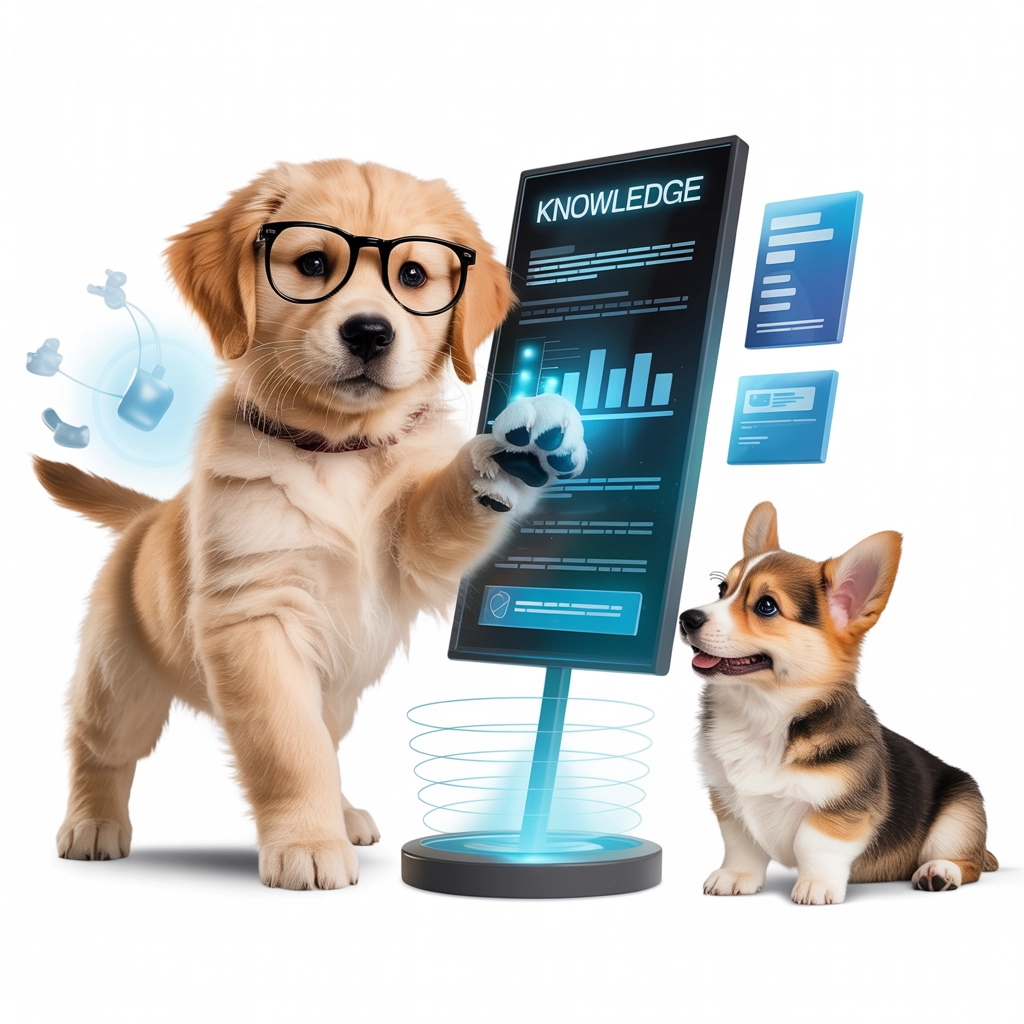5 Simple Ways to Save Time on Customer Support with AI Assistants
Discover five practical ways to implement AI in your customer support process that will save you hours each week without sacrificing the personal touch your customers love.

 🐾
🐾5 Simple Ways to Save Time on Customer Support with AI Assistants

If there's one thing small business owners never have enough of, it's time. Customer support, while essential, can be a major drain on your schedule. The good news? AI assistants have evolved from clunky chatbots to sophisticated support partners that can handle a surprising amount of your customer service workload.
In this guide, I'll show you five practical ways to implement AI in your customer support process that will save you hours each week — without sacrificing the personal touch your customers love.
1. Deploy AI Chatbots to Handle Repetitive Questions
The most common customer support questions probably make up 60-80% of your total inquiries. These are perfect candidates for automation.
Modern AI chatbots can handle far more than just basic FAQs. They can:
- Answer product specification questions by pulling from your database
- Process simple return requests and issue return labels
- Provide order status updates by connecting to your systems
- Troubleshoot common technical issues with step-by-step guidance
- Schedule appointments and send confirmation details
The key is setting up your chatbot to handle these specific scenarios well, rather than trying to make it answer everything.
"Our AI chatbot handles about 70% of our initial customer inquiries completely on its own. For a team of three, that's like having two additional full-time support agents." — Small business owner using Tailforce's Kana persona

Implementation tip: Start small with 5-10 of your most common questions. Monitor conversations to see where customers get stuck, then refine your bot's responses. The beauty of modern AI is that it gets better over time as it learns from interactions.
2. Automatically Route Support Tickets to the Right Person
Nothing wastes time like having tickets bounce between team members before landing with the right person. AI ticket routing analyzes the content of customer messages and automatically assigns them to the appropriate team member based on:
- The specific product or service mentioned
- The type of issue (technical, billing, returns, etc.)
- The customer's history and status
- Required expertise level
- Current workload of team members
A properly configured AI routing system can reduce ticket resolution time by up to 40% simply by eliminating the manual sorting and assignment process.
How to implement it: Most modern helpdesk platforms now offer AI-powered routing. You'll need to:
- Define your routing rules and team expertise areas
- Train the AI with examples of different types of tickets
- Set up automatic tagging for common issues
- Create escalation paths for complex problems
This approach is particularly valuable for businesses with specialized products or team members with different areas of expertise.
3. Create AI-Powered Self-Service Options
The fastest support ticket to resolve is the one that never gets created in the first place. AI-powered self-service tools help customers find answers themselves, reducing your ticket volume significantly.
Unlike traditional FAQs, AI self-service options can:
- Understand questions asked in natural language
- Provide personalized responses based on customer data
- Walk users through multi-step processes
- Generate custom tutorials or solutions
- Learn from successful resolutions to improve future answers

Case study: A Tailforce customer selling smart home devices reduced their support ticket volume by 45% after implementing an AI knowledge base that could generate device-specific troubleshooting guides based on the customer's exact model and setup.
To maximize the effectiveness of your self-service tools, place them prominently in your customer journey: on product pages, in order confirmation emails, and in your app or customer portal.
4. Use AI Agent Assist Tools for Complex Issues
Even when human support is needed, AI can still save tremendous time behind the scenes. AI agent assist tools work alongside your team to:
- Suggest responses based on similar past tickets
- Automatically pull up relevant knowledge base articles
- Draft email responses that agents can review and personalize
- Fill in support ticket details and categorize issues
- Transcribe and summarize phone conversations
These tools are particularly powerful because they enhance rather than replace human support. Your team handles fewer tickets overall but provides higher quality service on complex issues that truly need the human touch.
"Our support team saves about 2 minutes per ticket with AI suggesting responses and automatically handling the documentation. With 50+ tickets daily, that's nearly 2 hours saved every day." — E-commerce business owner
Implementation tip: Look for AI tools that integrate with your existing helpdesk system. Most major platforms now offer AI assistance features that can be enabled with minimal setup.
5. Build an AI-Powered Knowledge Base That Improves Over Time
A static knowledge base quickly becomes outdated. An AI-powered knowledge base, however, continually improves by:
- Identifying knowledge gaps based on customer questions
- Suggesting new articles that need to be created
- Automatically updating outdated information
- Reorganizing content based on usage patterns
- Creating personalized knowledge paths for different customer segments

The time savings come not just from customers finding answers themselves, but from dramatically reducing the maintenance burden on your team. Instead of regularly auditing your entire knowledge base, you can focus on creating new content only where it's needed most.
How to get started: Begin by migrating your existing FAQs and support documentation into a modern knowledge base platform that offers AI capabilities. Tools like Tailforce's Shin persona can help organize your existing content and identify gaps that need filling.
Implementing AI Support: Start Small and Scale
The best approach to AI customer support is incremental:
- Begin with one focused use case — perhaps automating responses to your top 5 most common questions
- Measure the time saved — track reduction in ticket volume and resolution time
- Gather customer feedback — ensure satisfaction remains high
- Expand to the next use case — add more capabilities as you see success
Many small businesses see a 30-50% reduction in support time within the first three months of implementing even basic AI support tools.
Remember that the goal isn't to replace the human touch completely, but to reserve your valuable time for the complex, high-value interactions where it makes the biggest difference.
Next Steps
Ready to reclaim hours of your week with AI-powered customer support? Here's how to get started:
- Identify your most time-consuming support tasks by reviewing recent tickets
- Explore AI solutions designed specifically for small businesses, like Tailforce's customer support personas
- Start with a free trial to test the impact on your workflow before committing
For more insights on automating your business processes, check out our guide on email automation or explore our full range of AI productivity tools.
What support tasks are currently eating up your time? Let us know in the comments, and we'll suggest specific automation strategies to help you reclaim those hours!
 🐾
🐾